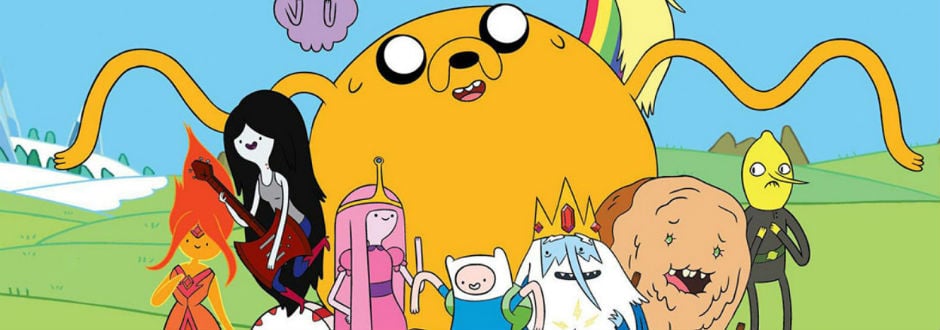Adventure Time Card Wars is a two-player card game based on an episode of Adventure Time named Card Wars, a fact it concisely illustrates by using all the same words. For those who haven’t watched the show, do.
Adventure Time Card Wars starter packs have been released intermittently, each with two character decks, and at the time of writing there are about six, five of which we tested in the intimidatingly palatial Zatu offices: BMO vs Lady Rainicorn, Princess Bubblegum vs Lumpy Space Princess, Ice King vs Marceline, Lemongrab vs Gunter and Fionna vs Cake. Rebecca and I were assigned the Fionna and Cake edition, which filled me with a rage that may never subside.
Playing The Game
It’s worth pointing out that initially, even once you’ve grasped the basic rules, the game is a bit like walking through fog in sick shades. Stuff is happening but you don’t know what, and whatever just brushed against your leg did not feel friendly.
This is mostly due to a mechanic whereby every creature you have played automatically attacks, and takes damage based on the opposing creature’s defence, at the end of your turn, like a blind man walking repeatedly into a table. At first, this makes you feel slightly out of control until, a few turns in, you realise that your turn is about setting up for that unavoidable action.
So yeah, the fog clears pretty quickly, at least it did for most. Simon over at table two looked a bit like a lost child in Sainsbury’s. After several turns of compulsory attacks, tactics start to present themselves. Players each have four landscape tiles, onto which they can play creatures and/or buildings. A player’s landscape tile and their opponent’s opposite form a lane, and creatures attack down their lane each turn.
Creatures and buildings may have ‘floop’ abilities. Using them will prevent that creature or building from attacking/being a building once you end your turn, and they present an interesting series of back-and-forths. For example, Rebecca played a building that granted the creature in that lane an extra 5 defence, which is plenty. Luckily, I had a small dog, which, when flooped, negated the opposing building in that lane.
That concludes my tactical decision making because tactics are for squares. This brings me to the game’s most interesting facet – how deceptive winning and losing are. Failing to think outside the box to the extent that my thoughts occupied a more compact box inside the original box seems like something that should lose me the game. But it didn’t.
That’s the key thing about the compulsory attack mechanic. Though my opponent made more tactical moves, shutting down my creature’s abilities and utilising spells seemingly far more effectively, a few turns in which there were empty lanes on her side (which means any damage done affects her overall hitpoints, rather than those of a creature) ended up edging me ahead.
That’s the nice trade-off the game brings. Going all-out offensive will put effective dents in your opponent’s creatures, but those comparatively tiny dents it leaves in your actual face will accumulate if you don’t plug your laneholes.
The artwork and card descriptions are perfect tonally, capturing the eccentric humour of the show while managing to convey the information they need to without any confusion.
Those who have seen the episode from which this game was sprogged will know its fictional counterpart is a little more complicated, played on a holographic board and with elaborate, odd decision making. It’s a good episode of a good show, and, considering holographic pigs still elude the apparent ‘geniuses’ of modern science, this game does a really good job of capturing the essence of the TV version as depicted. It’s daft and strange, and both of those are compliments.
Adventure Time Card Wars: The Verdict
All five of the aforementioned Adventure Time Card Wars starter sets are available here at Zatu! Buy your favourites now!
This blog was originally published on November 16th, 2016. Updated on March 30th, 2022 to improve the information available.









